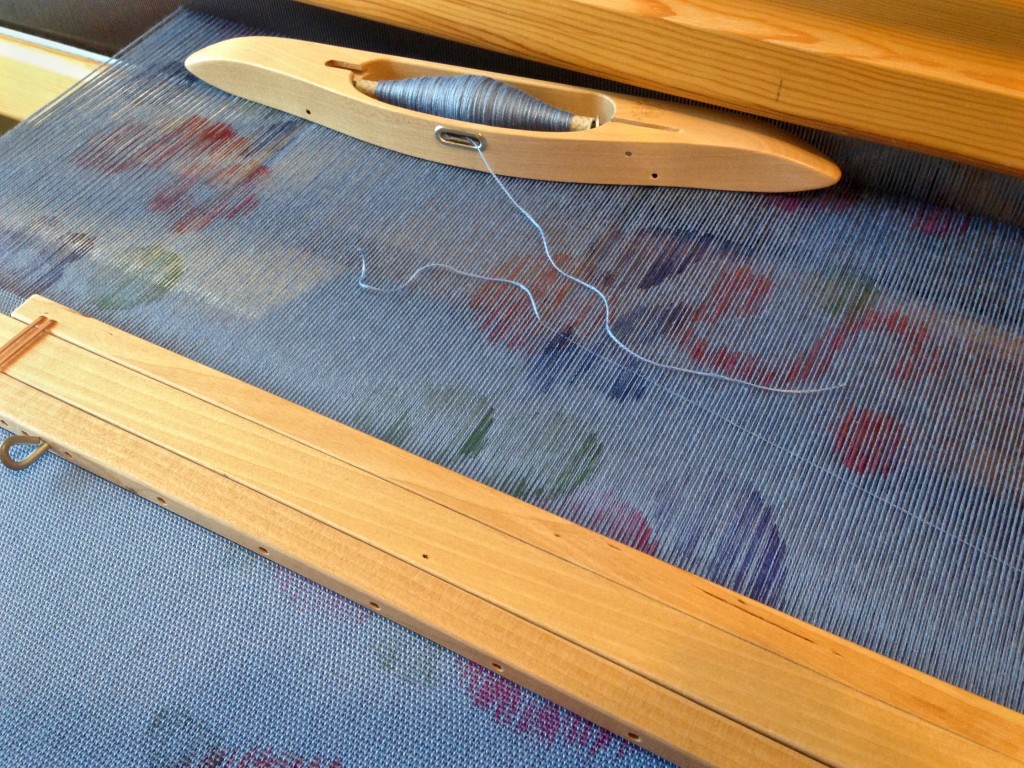Have you ever drawn blood while winding a bobbin or quill? I have. First you feel the heat, and then, ouch! …the thread makes a little slice. Linen can do that. And wool can give you a little burn. True, my electric bobbin winder is fast, but I have experienced similar ouchies with my good ol’ Swedish hand-turned bobbin winder, too. That’s why I keep a woodcarver’s leather thumb guard at my bobbin winder station. I use it every time. For linen, wool, cotton, everything.

I first tried a leather golfing glove and found it too bulky; and then I tried a leather quilter’s thumb, but it was too thin and soon wore out. When Steve saw my predicament, he ordered some small leather thumb guards for me–the kind that woodcarvers use. Perfect! Convenient, sturdy, and no more ouchies. (We get the thumb guards HERE. You can also find them on Amazon.com. I have no affiliate links.)

May you keep your hands in good working order.
Happy Weaving,
Karen





